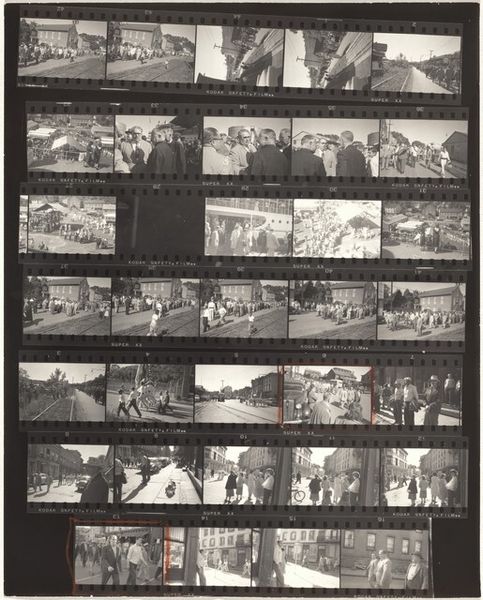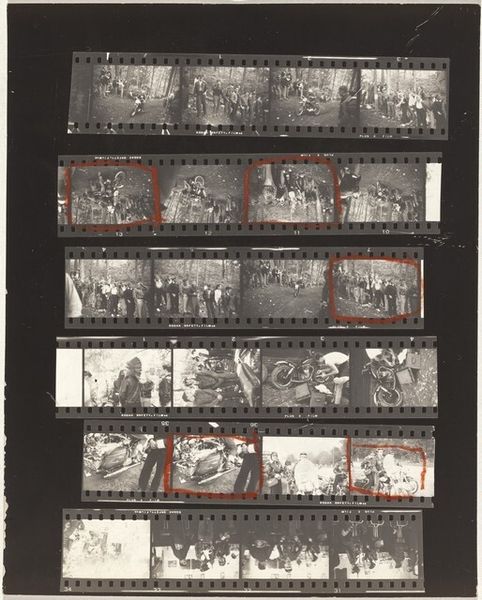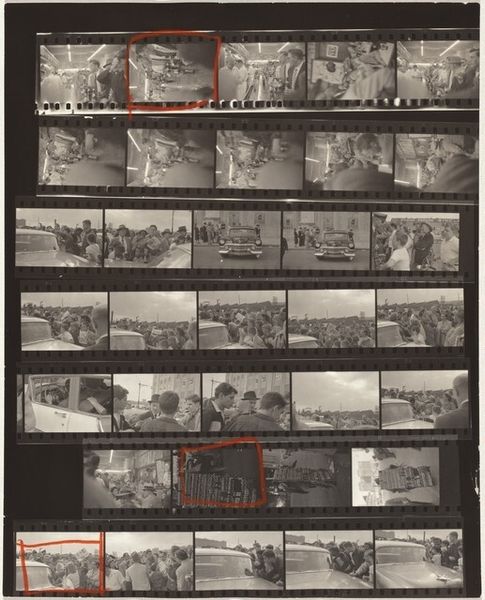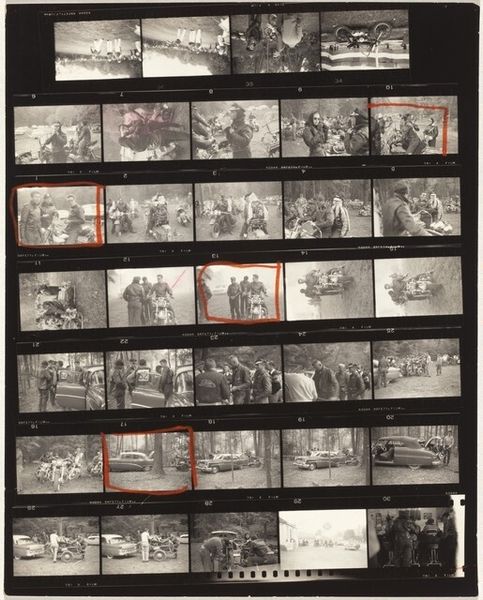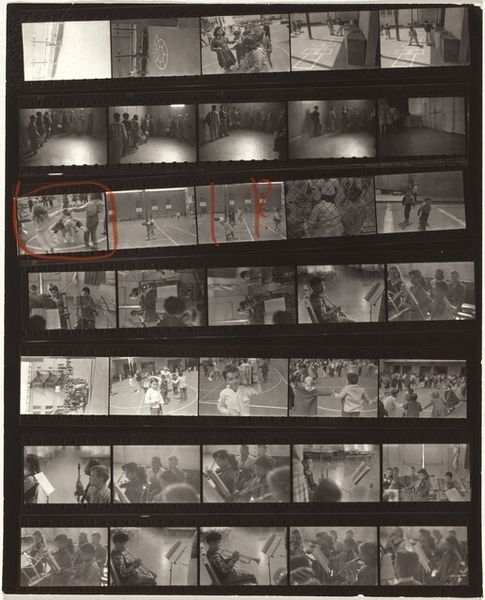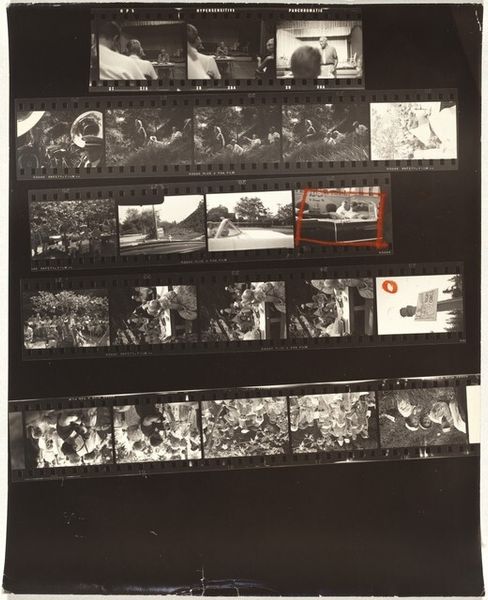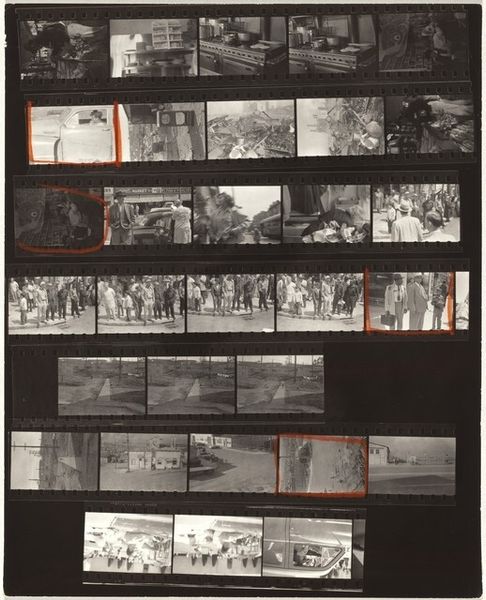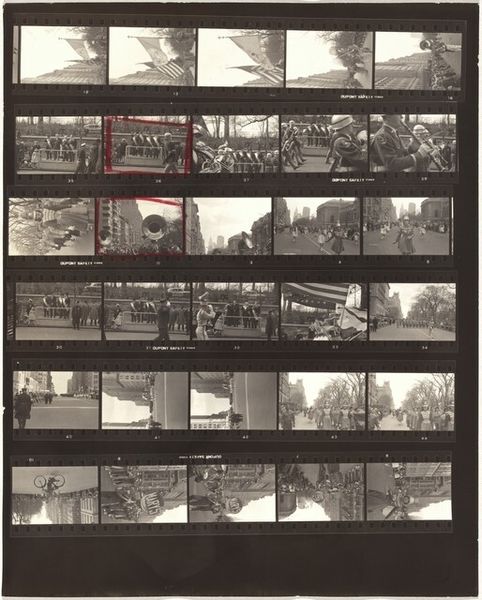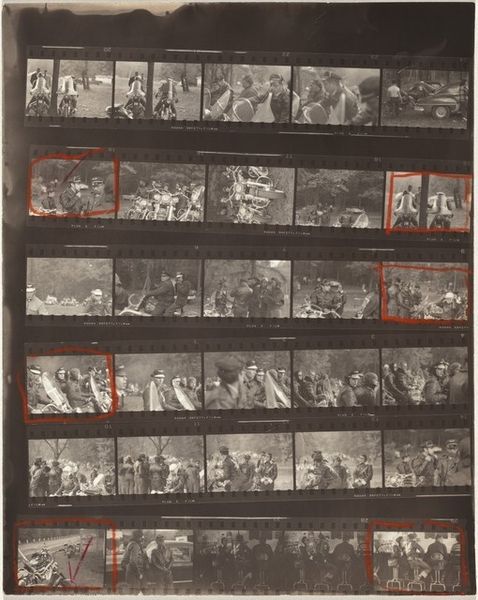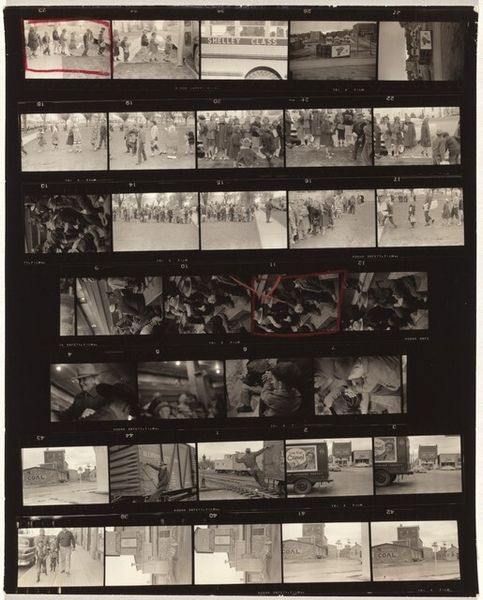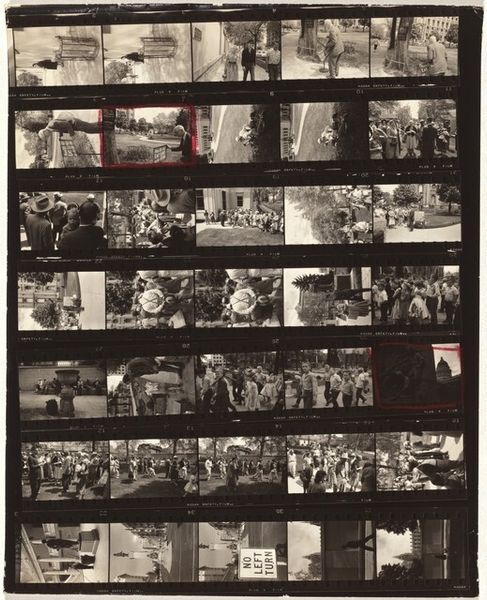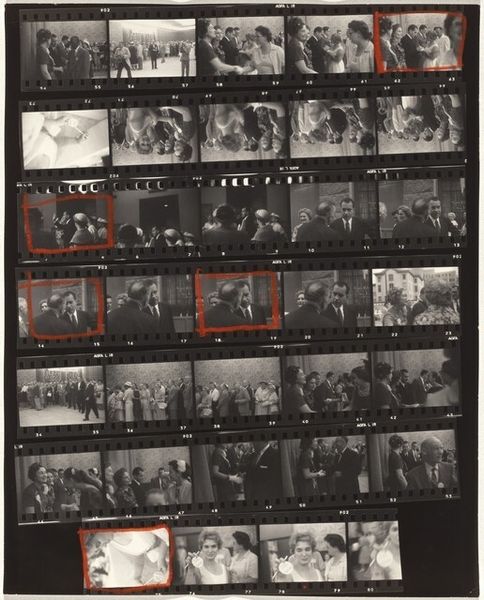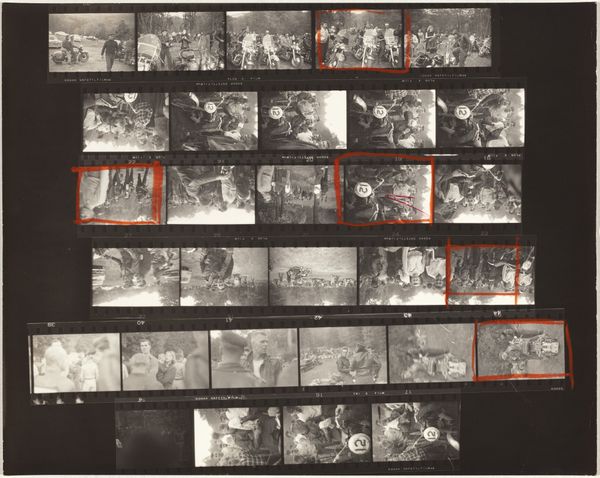
photography, gelatin-silver-print
#
film photography
#
landscape
#
photography
#
gelatin-silver-print
Dimensions: sheet: 25.2 x 20.1 cm (9 15/16 x 7 15/16 in.)
Copyright: National Gallery of Art: CC0 1.0
Curator: Robert Frank’s "Newburgh, New York IX," made in 1955, presents a full contact sheet. The gelatin silver print reveals his working process as he photographs what appears to be a motorcycle race. Editor: My first thought is about the materiality of it. It's not just the event captured, but a document OF the photographic process, an artifact that hints at the labor behind a "decisive moment." There’s something incredibly compelling about seeing this sheet, riddled with grease pencil marks circling his chosen frames. Curator: Exactly. The materiality screams the artist's hand and mind at work. Frank isn’t hiding anything here; the work challenges conventional expectations by exposing his methods of selection. Each chosen shot highlights a key moment, but together the contact sheets tell the story of production—effort in material, time and film. Editor: It encourages a political reading too. Motorcycles – vehicles synonymous with mobility and freedom, yet also emblematic of pollution and counterculture—becoming central in a narrative about postwar America and its relationship to consumerism, environmental degradation and questions of belonging. What did the event itself look like to him? How did this scene reinforce Frank's own status as an outsider, questioning norms, power and authority? Curator: Precisely. This work invites us to reflect on who is included in "progress." The photographs feel charged with underlying commentary. Beyond surface aesthetics or emotional reactions it demands we consider these photographic artifacts as evidence in a broader social analysis. Editor: Ultimately, Frank's “Newburgh, New York IX” exposes more than just images—it showcases the complex interplay between observer and observed, labor and leisure, questioning the mythology of photographic truth. Curator: Yes, it becomes evidence of Frank wrestling with ideas about documenting the “real”, not through polished results but through embracing its raw, incomplete materiality.
Comments
No comments
Be the first to comment and join the conversation on the ultimate creative platform.
